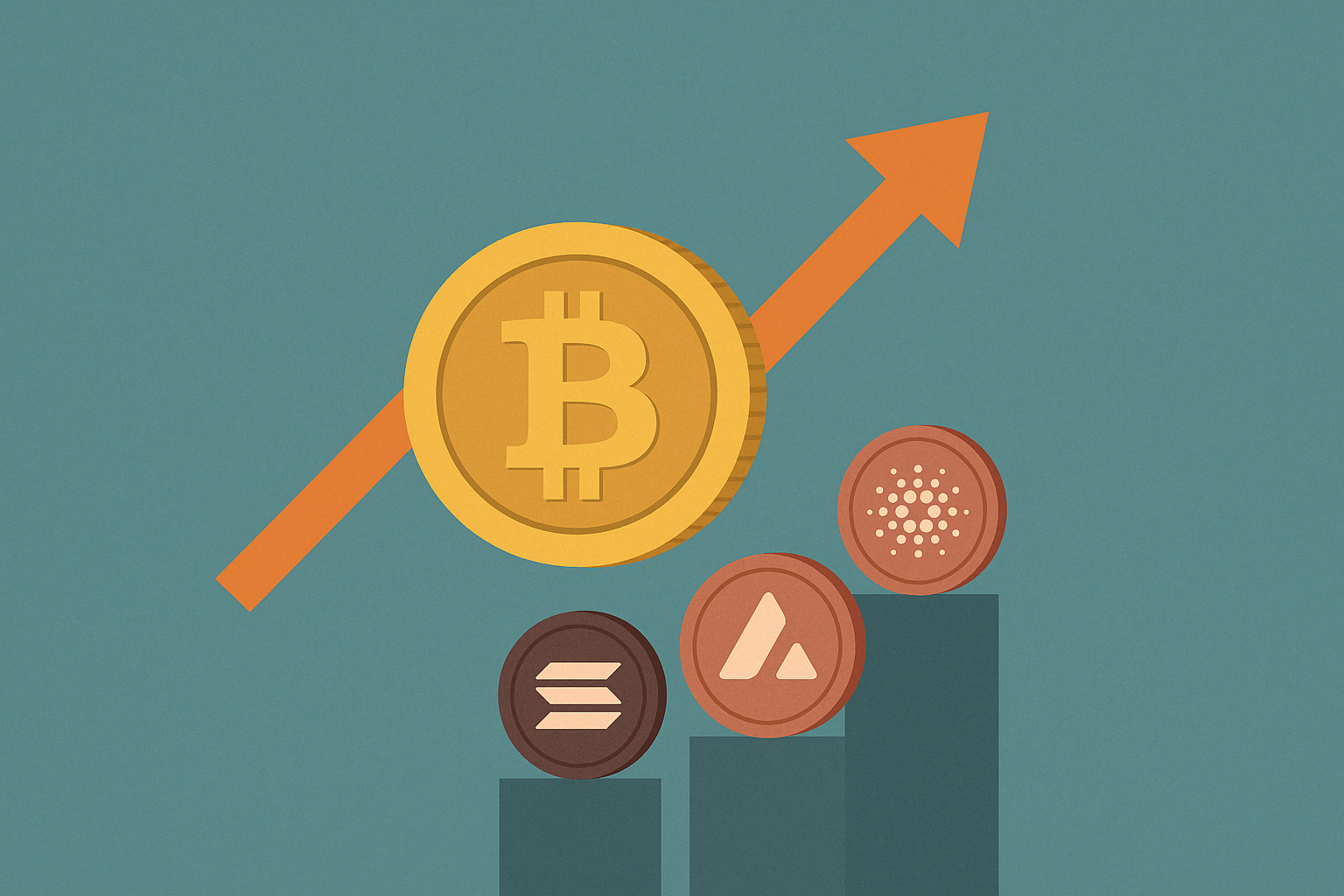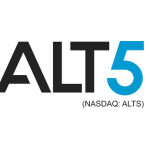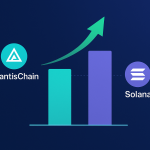Cryptocurrency
Altcoin Market Struggles As Bitcoin Dominance Rises To 55%: A Deep Dive Into July 2025 Trends

Introduction
As July 2025 unfolds, the cryptocurrency market is undergoing a familiar yet turbulent shift: Bitcoin is reclaiming dominance, climbing above the 55% threshold for the first time in over a year. While many investors have welcomed the relative stability of BTC amidst macroeconomic uncertainty, this surge has come at a cost. Altcoins — once the champions of innovation and decentralization — are now underperforming across the board.
From Solana and Cardano to AVAX and other Layer-1 tokens, the altcoin sector is experiencing increased selling pressure. Traders are migrating capital back into Bitcoin, leaving smaller tokens exposed to reduced volume, lower volatility upside, and decreased institutional interest. This article unpacks the dynamics behind Bitcoin’s dominance resurgence and examines its impact on leading altcoins, the broader market, and investor sentiment.
Understanding Bitcoin Dominance: What It Means And Why It Matters?
Bitcoin dominance is a metric that measures Bitcoin’s share of the total cryptocurrency market capitalization. When dominance rises, it suggests that money is flowing into Bitcoin at the expense of altcoins. Historically, periods of high BTC dominance indicate cautious investor sentiment — favoring the security and liquidity of the largest cryptocurrency.
As of July 5, 2025, Bitcoin dominance has surged past 55% and briefly touched 64.7%, according to a recent report from AInvest. This is the highest level since late 2022 and marks a decisive pivot from the multi-month altcoin cycle that defined the early part of 2025.
Key Drivers Of Rising Bitcoin Dominance In July 2025
1. Macro Uncertainty and Economic Caution
With inflation data from the U.S. expected to be released mid-July, and interest rate cuts still unclear, markets have entered a risk-off environment. Investors are retreating from volatile, smaller-cap assets like altcoins and returning to Bitcoin, which is increasingly viewed as a digital safe haven.
Moreover, the volatility in traditional markets — from equity drawdowns to stagnating commodity prices — has reinforced Bitcoin’s perception as “digital gold.”
2. Institutional Rotation and ETF Activity
The rise of institutional capital in the crypto space has also played a key role. BlackRock, Fidelity, and other asset managers have ramped up their Bitcoin ETF offerings, drawing billions in inflows since Q2 2025. These products have legitimized Bitcoin to institutional portfolios, often at the expense of altcoins.
Solana, Cardano, and AVAX — while promising — lack the regulatory clarity and ETF access that institutional investors demand. As a result, liquidity is flowing away from these ecosystems into the more structured BTC instruments.
3. Decreasing Retail Participation in Altcoins
Retail traders have historically driven altcoin cycles, often chasing momentum. However, in recent months, there’s been a decline in retail enthusiasm for smaller tokens. According to data from Cointelegraph, trading volumes on decentralized exchanges have dropped 18% in the past 30 days — a bearish signal for the altcoin ecosystem.
Solana, Cardano, And AVAX: Case Studies In Underperformance
Solana (SOL): A Battle for Developer Confidence
Solana’s price has declined nearly 15% in the past two weeks, with developer activity stagnating and NFT volume on its network continuing to dip. Once hailed as the Ethereum-killer, Solana’s biggest challenge in 2025 appears to be sustaining network growth in a saturated Layer-1 space.
Despite recent partnerships in the gaming sector and updates to its proof-of-history mechanism, SOL has failed to keep up with investor expectations. The broader market shift to Bitcoin has only magnified this lag.
Cardano (ADA): Innovation Overshadowed by Market Sentiment
Cardano, which launched its long-anticipated Hydra scaling upgrade earlier this year, is seeing a divergence between technical progress and price action. ADA is down more than 20% since June, reflecting the market’s broader disinterest in Layer-1s outside of BTC and ETH.
Charles Hoskinson and the Cardano Foundation have emphasized real-world use cases, but these fundamentals are being overlooked in the current capital rotation. According to CryptoRank, ADA has been among the least traded top-10 assets on centralized exchanges in July.
Avalanche (AVAX): Institutional Partnerships Failing to Drive Momentum
Avalanche entered 2025 with momentum, buoyed by partnerships with Amazon Web Services and several DeFi launches. However, AVAX has fallen over 25% from its March highs. Investors seem unimpressed by enterprise deals, focusing instead on network usage and token inflation.
AVAX’s failure to break out of its descending channel mirrors that of many other mid-tier altcoins. Bitcoin’s dominance has effectively siphoned off speculative capital from these projects.
The Historical Parallel: Is This A 2019 Replay?
The current market cycle resembles the 2019 landscape, where Bitcoin reclaimed dominance after the ICO boom faded. Back then, altcoins spent months in stagnation before selectively recovering.
Today, a similar trend may be forming. Bitcoin is consolidating above $60,000, but the altcoin market cap continues to decline. Unless a new catalyst appears — such as a regulatory breakthrough or a killer dApp — history may repeat itself.
Will There Be An Altseason In 2025?
Altseason — the period when altcoins outperform Bitcoin — typically occurs when BTC stabilizes and investors feel confident to take on more risk.
At present, most indicators suggest this moment is still far off. Volatility in BTC remains elevated, regulatory uncertainty looms, and liquidity is favoring major tokens. However, this doesn’t mean altseason is canceled — it may simply be postponed to Q4 2025 or early 2026.
Watchlists remain active for:
- Emerging Layer-2 projects.
- DePIN (Decentralized Physical Infrastructure) networks.
- Real-world asset tokenization protocols.
- But for now, patience is the most important asset altcoin holders can own.
What Should Investors Do Next?
For altcoin investors, the best strategies in a Bitcoin-dominant market may include:
- Rebalancing portfolios toward BTC and ETH.
- Monitoring on-chain metrics like wallet growth, TVL, and dev activity.
- Staying updated on ETF proposals and SEC actions.
- Avoiding high leverage trades, as thin liquidity makes altcoins more volatile.
Short-term pain may continue, but long-term conviction in quality projects can still yield results — provided the selection is backed by fundamentals, not speculation.
Conclusion
As Bitcoin continues to assert dominance in July 2025, the altcoin landscape finds itself in a period of reflection. Once driven by hype, many projects now face a test of resilience and relevance. For Solana, Cardano, AVAX, and their peers, the coming months will be critical.
While Bitcoin benefits from institutional backing, regulatory clarity, and global recognition, altcoins must build and prove utility. The road ahead won’t be easy, but for those who endure, the next cycle may offer new highs — both in innovation and market value. For now, the market belongs to Bitcoin. But crypto history has shown: dominance never lasts forever.








